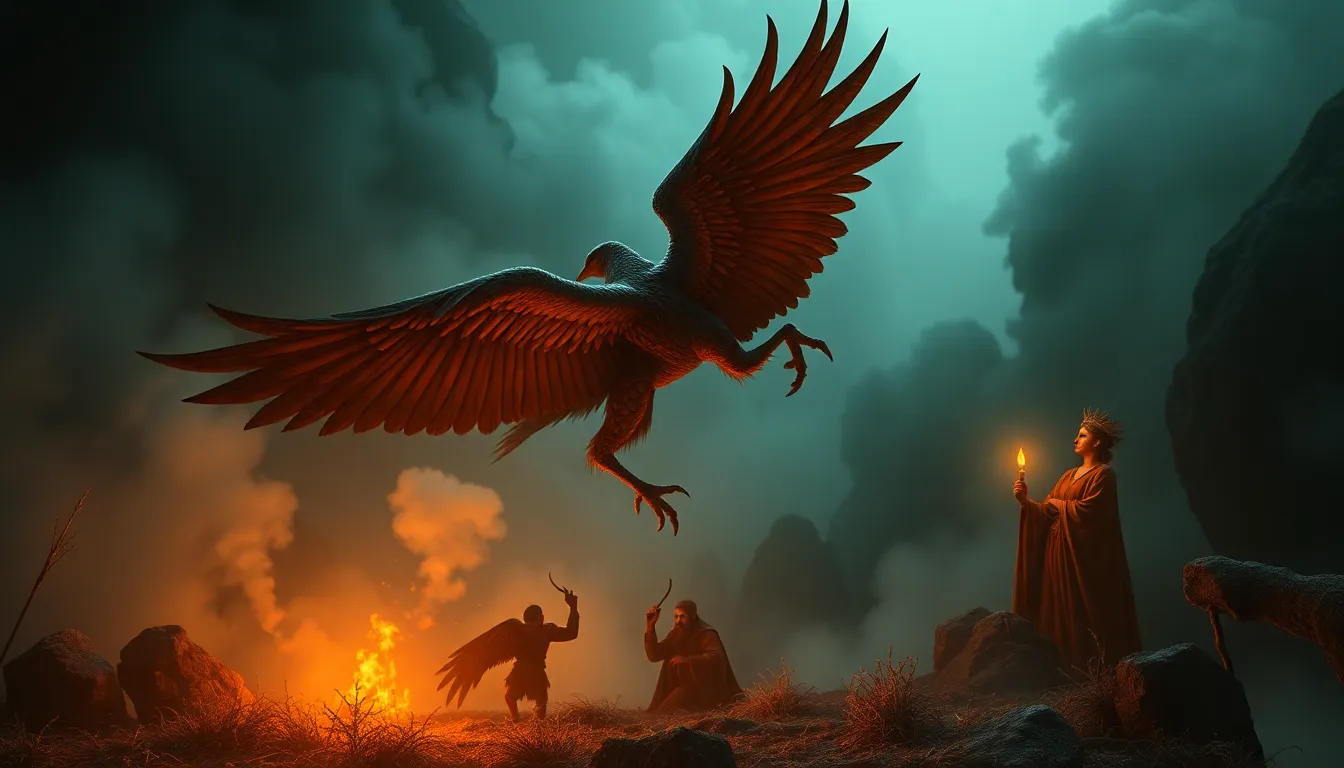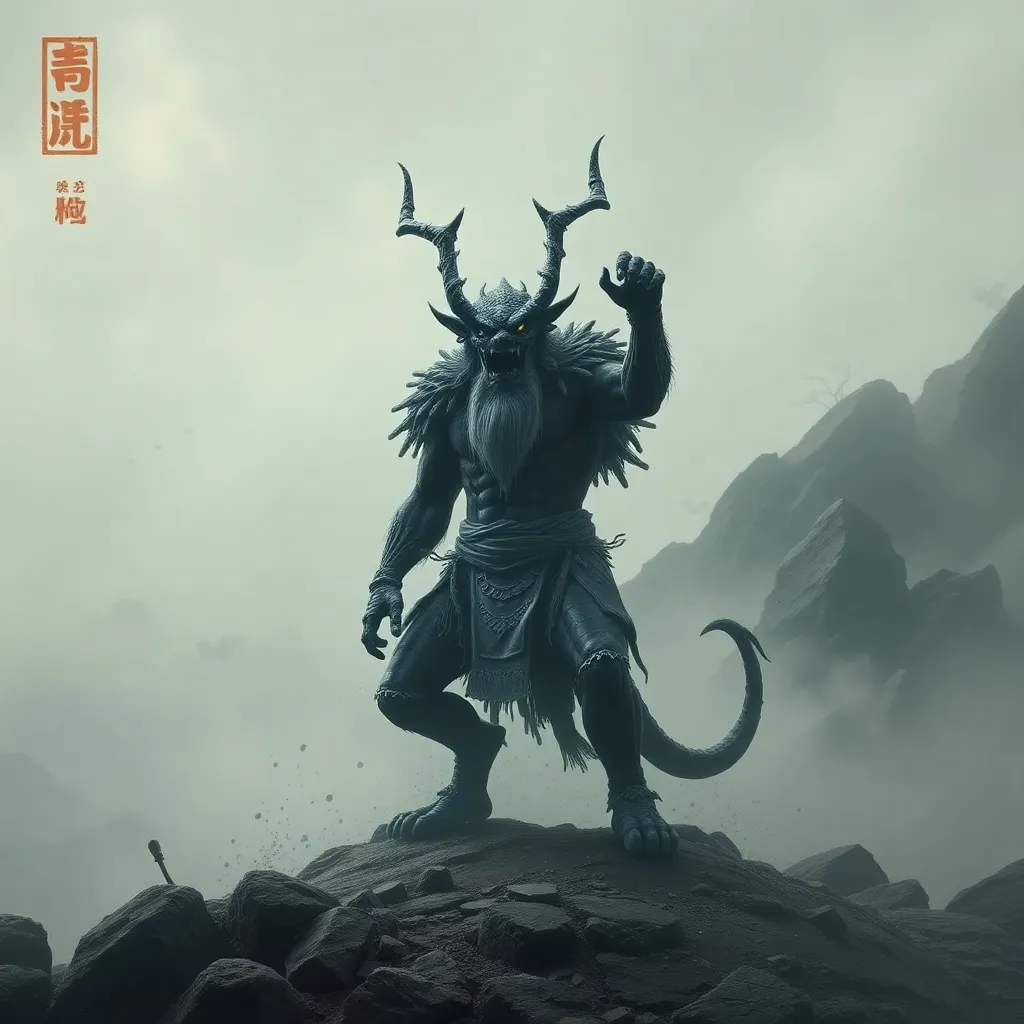The Simurgh in Turkish Storytelling: A Legacy of Oral Traditions
I. Introduction
The Simurgh, a mythical creature resembling a gigantic bird, holds a significant place in the tapestry of Turkish folklore. Often depicted as a benevolent being, the Simurgh embodies a mixture of wisdom, power, and mystical qualities. In Turkish storytelling, particularly within the realm of oral traditions, the Simurgh serves not only as a fascinating character but also as a vessel conveying profound cultural values and moral lessons.
Oral traditions have been integral to Turkish storytelling, allowing tales to be passed down through generations, often adapting and evolving with each retelling. This article aims to explore the rich mythology surrounding the Simurgh, its role in Turkish folklore, and the importance of oral traditions in preserving this cultural heritage.
II. The Mythology of the Simurgh
A. Origins and historical significance
The origins of the Simurgh can be traced back to ancient Persian mythology, where it is known as a creature of immense wisdom and power. In Turkish culture, the Simurgh has been embraced and adapted, representing various traits that resonate with the values of the people. Historical texts and epics often depict the Simurgh as a guardian of the earth and a protector of humanity.
B. Symbolism and attributes of the Simurgh
The Simurgh is often associated with several key attributes, including:
- Wisdom: The Simurgh is considered a source of profound knowledge, often providing guidance to heroes in their quests.
- Healing: Many tales portray the Simurgh as a healer, capable of curing ailments and bringing peace.
- Connection to the divine: The Simurgh is often seen as a messenger between the earthly realm and the divine, symbolizing the connection between humanity and the higher powers.
C. Comparison with other mythological birds across different cultures
Across various cultures, the concept of a mythical bird symbolizes similar themes of wisdom and protection. For instance:
- Garuda: In Hindu mythology, Garuda is a divine bird that serves as a vehicle for Lord Vishnu and symbolizes speed and martial prowess.
- Phoenix: In Western mythology, the Phoenix represents rebirth and immortality, rising from its ashes to start anew.
- Huma Bird: In Persian folklore, the Huma bird is said to bring happiness and is often associated with good fortune.
III. The Role of the Simurgh in Turkish Folklore
A. Prominent stories featuring the Simurgh
Numerous stories in Turkish folklore highlight the Simurgh’s role as a guiding figure. One of the most notable tales is that of the “Simurgh and the Hero,” where a young hero seeks the Simurgh’s wisdom to overcome formidable challenges. The Simurgh’s guidance proves crucial in helping the hero navigate through trials, ultimately leading to personal growth and enlightenment.
B. Themes and morals conveyed through these tales
The stories of the Simurgh often convey important themes, such as:
- Perseverance: The journey to seek the Simurgh symbolizes the struggle and determination required to achieve one’s goals.
- Wisdom: The emphasis on seeking knowledge reinforces the value of learning and understanding in overcoming life’s obstacles.
- Community: Many tales highlight the importance of community support and collaboration in the hero’s journey.
C. The Simurgh as a symbol of wisdom and guidance
Throughout Turkish folklore, the Simurgh stands as a representation of wisdom and guidance. This archetype encourages individuals to seek counsel and embrace the lessons learned from their experiences. The Simurgh’s presence often acts as a catalyst for change, inspiring characters to evolve and grow on their journeys.
IV. Oral Traditions and Their Impact on Turkish Storytelling
A. Definition and significance of oral traditions in Turkish culture
Oral traditions in Turkish culture are a rich tapestry of storytelling that encompasses myths, legends, proverbs, and songs. These traditions serve not only as entertainment but also as a means of preserving history, cultural values, and shared identities among communities.
B. Methods of storytelling: performance, music, and community engagement
Storytelling in Turkish culture often involves various methods, including:
- Performance: Storytellers, or “dastan tellers,” often engage audiences through dramatic recitations, bringing characters and stories to life.
- Music: Traditional instruments, such as the saz, accompany stories, enhancing the emotional impact and creating a communal atmosphere.
- Community engagement: Storytelling events often involve communal gatherings, fostering a sense of belonging and shared cultural identity.
C. The role of the storyteller as a custodian of culture
Storytellers in Turkish culture are seen as custodians of tradition, responsible for passing down knowledge and values from one generation to the next. They play a pivotal role in keeping stories alive, ensuring that the wisdom of the past continues to resonate within contemporary society.
V. The Simurgh in Contemporary Turkish Literature
A. Evolution of the Simurgh’s portrayal in modern narratives
In recent years, the portrayal of the Simurgh has evolved within contemporary Turkish literature. Modern authors reinterpret the mythical bird, often exploring themes of identity, belonging, and the intersection of tradition and modernity.
B. Influence of oral traditions on contemporary authors
Contemporary writers are increasingly drawing inspiration from oral traditions, infusing their narratives with elements of folklore while addressing contemporary issues. This blend of old and new allows for a rich literary landscape that honors cultural heritage while engaging with modern audiences.
C. Examples of recent works that feature the Simurgh
Several notable works in contemporary Turkish literature feature the Simurgh, such as:
- “The Simurgh’s Flight” by Elif Shafak: A novel that intertwines the Simurgh myth with themes of migration and personal transformation.
- “In Search of the Simurgh” by Orhan Pamuk: A reflective narrative exploring the significance of the Simurgh in Turkish identity.
VI. The Legacy of the Simurgh Beyond Turkey
A. The spread of the Simurgh myth in neighboring cultures
The Simurgh’s influence extends beyond Turkey, spreading to neighboring cultures across the Middle East and Central Asia. Its symbolism resonates within various narratives, often adapted to fit local contexts.
B. Cross-cultural adaptations and interpretations of the Simurgh
Cross-cultural adaptations of the Simurgh have emerged, showcasing its versatility as a symbol of wisdom and guidance. Different cultures have reinterpreted the Simurgh, integrating it into their own mythologies and storytelling traditions.
C. The Simurgh’s impact on global storytelling traditions
The impact of the Simurgh can be seen in global storytelling traditions, influencing narratives that explore themes of transformation, wisdom, and the quest for identity. Its legacy continues to inspire storytellers and authors around the world.
VII. Challenges in Preserving Oral Traditions
A. The decline of oral storytelling in the digital age
In the digital age, the art of oral storytelling faces challenges, as modern technology often overshadows traditional practices. The prevalence of digital entertainment can lead to a decline in communal storytelling gatherings.
B. Efforts to revive and sustain oral traditions in Turkey
Efforts to revive oral traditions in Turkey include:
- Community workshops: Initiatives that encourage storytelling and performance art within local communities.
- Educational programs: Schools incorporating folklore into their curriculums to engage students with their cultural heritage.
- Festivals: Cultural festivals celebrating oral traditions, inviting storytellers to share their craft.
C. The importance of educating future generations
Educating future generations about the significance of oral traditions is crucial in preserving cultural heritage



